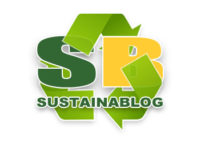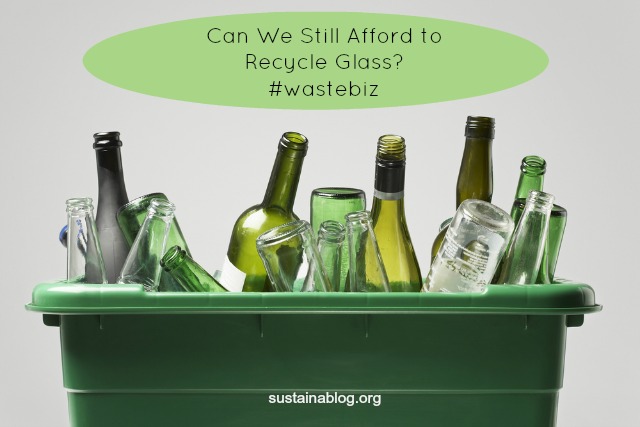Glass, along with aluminum, is one of those materials that strikes most of us as a no-brainer for the recycling bin. But it turns out that some places are asking residents to go ahead and throw those glass bottles in the trash. It turns out that recycling glass is an expensive proposition, so much so that waste haulers now have to pay recycling facilities to take the material.
According to Waste Dive, “Waste Management’s CFO James Fish, said glass is difficult to handle, hard on machinery and ‘the only recyclable commodity it has to pay a processor to take.’ The company is considering charging customers extra if they want glass recycled. ” Other processors tell similar stories.
I have to wonder if single-stream recycling is the culprit here: the required machinery mentioned separates glass out from other materials, and glass makers who’d like to use more recycled material have trouble finding it with high enough quality. Would asking customers to separate glass out inevitably bring recycling rates down? Or is the cost going to stay high regardless?
Waste Dive links to an article at the Wall Street Journal, but you’ve got to have a subscription to read it (and I don’t). If you have details to add, please do…
Other waste biz news:
The spoiled meat detector: MIT chemists have developed a sensor made from chemically modified carbon nanotubes that could tell grocers and consumers if meat has spoiled. The sensor would be incorporated into “smart” packaging. (via Waste Dive)
More zero-waste manufacturing: Food and beverage company Nestlé USA has achieved zero waste-to-landfill in all of its North American plants.
Waste bread to beer: Belgian brewery the Brussels Beer Project is using bread headed for the trash as the main ingredient in its Babylone brew. Reuters points out this isn’t a new idea – the Mesopotamians did it 4000 years ago. But it does make use of a substantial food waste stream. (via Manufacturing.net)
Photo credit: Shutterstock


Clear Intentions
Hey Jeff!
Single stream-recycling is definitely the culprit here. Here’s why:
When glass gets combined with everything else, like paper, plastic, aluminum, and cardboard, the glass inevitably breaks into tiny little pieces, which become practically impossible for recycling facilities to remove.
So what’s leftover after separation of single-stream recycling at a facility is a whole lot of glass mixed with trash, and they have to send it to the landfill. Believe it or not, over half of the glass being put into single-stream is still not getting recycled.
A no-brainer exactly…..if you want to know more give us a shout!
-Todd
http://www.clearintentions.glass or facebook.com/clearintentions.glass
Jeff McIntire-Strasburg
Hi, Todd–
Thanks for chiming in! I spent a little time on your site this morning; I’ll reach out…